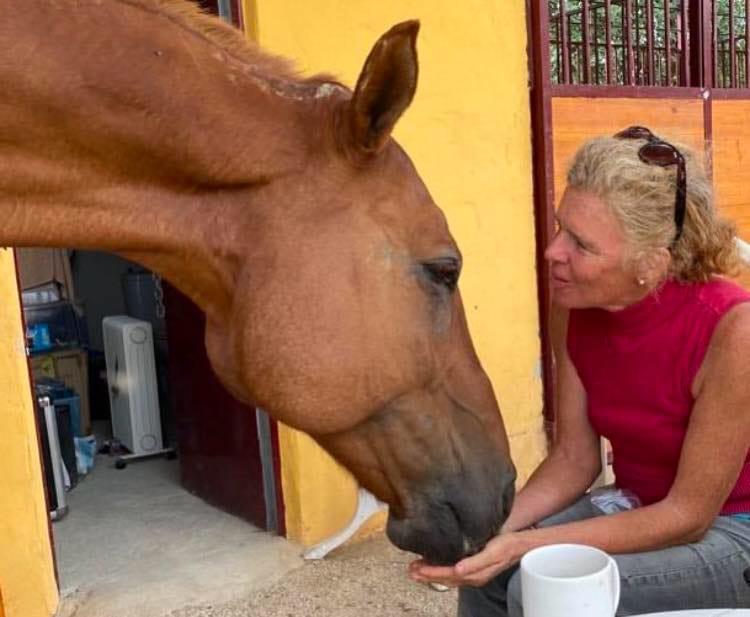It is Christmas Time – and there are Christmas Treats coming and going
all over the place. For horses and humans alike. So, I thought it would
be a good time to bring back an article I wrote about 7 years ago, but is
still very relevant. What I am about to share is my opinion and is based
solely on my personal experiences on giving horses “treats”.
Here we go:
In my opinion, there are four ways of using “food treats” when
teaching horses:
- as a bribe,
- as a reward
- as a distraction.
- as a treat-treat
I believe there is a place for each. What is important is that, as
a horse handler, we are aware of how we are using the “treats”
in each instance.
Bribing
You use food to lure your horse into doing something: going in
a trailer, his stable, coming to the gate to see you, standing at
the mounting block, even “connecting”.
Rewarding
Your horse displays a behaviour and you give it a “treat” in
response to this behaviour. Sometimes we have requested the
behaviour, sometimes we haven’t, and sometimes we would
rather it didn’t happen but we reward it anyway without
realizing..
Distraction (also called Overshadowing)
The name says it all – you use food to take your horse’s
attention away from something else that might be happening
to him (grooming, putting a saddle on, a rug on, giving an
injection….)
Treat
You show up with some food, out of the blue. No
reason, no behaviour needed.
So, by definition (my definition!), if the horse is doing
something only because there is a treat to be had, it is bribery.
If it gets a “treat” after doing something, it is a reward. If he
gets it to keep him quiet, it is a distraction. If I can surprise him
with a treat it is a treat-treat!
The question I was asked that prompted this article back then
was:
“Do you think it is OK to treat when we are working on
“connection”?
My view is that I would like my horse to connect with me
whether there is food involved or not and not ‘because there
will be food’. To me, one scenario is truer than the other and
leads to more genuine connection. Generally, I do not use food
when I am interacting with horses…. Unless it is a real treat!
(And if I feel it was expected, I stop giving treats for a while).
Of course, there is always the exception that makes the rule! In
cases where a horse has a very negative association with
something (being caught, touched, saddled, groomed, tied up…
whatever), using food as a “pleasant thing that happens after
the “bad” thing happens” can be very useful to change the
association. But then again we need to be careful: if it is a
bribe or a distraction it is only sweeping “the issue” under the
carpet. We want “us” to become the best thing that happens
to our horses after being caught, haltered, saddled, mounted.
In a nutshell, in my work with horses I strive to become the
best “treat” my horse could wish for!
Now there is the subject for yet another article: How can we
become the best treat our horses could ever wish for? I would
love to hear your thoughts!
In the meantime, wishing you all, wherever you are, a peaceful,
restful Holiday Season. May you have many quiet hours with
your horse…. treats or no treats!
Warmest regards from Southern Spain,

The Southern Grey Mare
For more guidance on your path to horse gaurdianship, be sure to check out our tutorials in the STAND UP FOR YOUR HORSE Membership and join our community for ongoing tips and support. You’re not alone in this—every seasoned horse guardian was once right where you are now, and with each new step, you’ll grow in confidence and connection with your horse.
JOIN NOW!

0 Comments